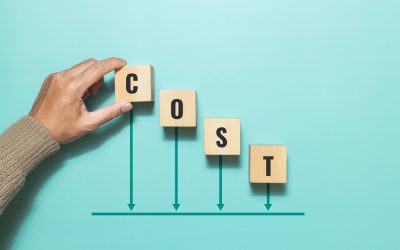Planning and re-forecasting during these strange days will be an essential survival skill. In this post, recently put together for Brewbound, we’ll review a financial re-forecasting template you can use to model out extreme changes in brewery sales, margins and cash flows.
“Nobody told me there’d be days like these.” — John Lennon
Strange days, indeed. Bars and restaurants are closed, schools are shut down, and social distancing is now a survival skill. Most peculiar.
The situation is disorienting, confusing and generally freaky. And yet, the show must go on. We have breweries to run and employees who need clear direction and leadership.
Planning and re-forecasting during these strange days will be an essential survival skill, as well. In this article, we’ll review a financial re-forecasting template you can use to model out extreme changes in brewery sales, margins and cash flows.
The model summarizes financial contingency plans to set cash flow expectations. It also serves as a tool to present your anticipated cash needs to lenders or outside investors.
Let’s hope everything gets back to normal very soon. If not, this financial model can be used to help plan for these abnormal conditions. Let’s dig in.
Use the Current Financial Plan as a Starting Point
If you have an annual budget with projected sales, margins and operating expenses, use it as a starting point for the financial re-forecast.
The original budget will serve as a stake in the ground – a point from which changes can be made using best estimates for the foreseeable future.

Use Actual Results + Re-Forecast Results
January and February financial results are complete and can be added to the model. Use these actual results in combination with the new forecast for the remainder of the year. This approach will provide a monthly and full year look at the new financial plan. It will combine what is known (the January and February results) with what is unknown (everything else).
The model also shows the estimated financial results and cash needs in the near term and over the course of the year.

Sales Re-forecast: Wholesale, Self-Distribution, Taproom
Sales planning is different depending on your go-to market model: taproom, self-distribution, wholesale, or a combination of all three. Set up your model so that you can re-forecast each revenue stream appropriate for your business.
With so many on-premise locations being forced to close, that channel of business is all but gone in many states. For taproom breweries, there may still be an option for to-go beer sales or merchandise. Adjust on-premise business down accordingly.
If you produce package beer and have a route to market via self-distribution or through wholesalers, this may be an opportunity to offset some of the decline in on-premise sales. Talk with your wholesalers and retailers. What are they seeing? Adjust these sales accordingly, as well.
Identify Fixed and Variable Expenses
Fixed expenses remain the same whether sales go up or down. Lease expense is an example. Variable expenses change in relation to an increase or decrease in sales. Payroll or utilities are examples of variable costs.
Use your original budget and identify fixed and variable costs. Adjust variable costs based on expected changes to revenue. Note which fixed costs may present an opportunity for negotiation. Given the current climate, it may be possible to work with vendors to defer certain expenses until this crisis passes.
How Long Will this Last?
Plan on at least two or three months of disruption. You can adjust the model to a longer, or hopefully shorter, timeframe as new information is available.
Focus your planning on the next few months. Focus on cash flow. During this time, cash flow will keep the business afloat.
Adjust the plan regularly as you learn more about market conditions and start to see trends. The model is a summary and can be updated quickly.
What Will the Bank Need?
If you plan to go to your bank and ask for help, here’s what they’ll want:
- Last year’s financial statements
- This year’s financial results, year-to-date
- A forward-looking financial forecast … what you expect will happen
The financial re-forecast model will provide answers to questions No. 2 and No. 3. No one knows exactly what will happen next, but having a plan on paper shows you are working to figure it out.
Wrap Up + Action Items
In this uncertain time, a good financial model can help provide some certainty. Watch the video, download the Re-Forecasting-Model, and borrow from the ideas presented here.
Wishing you all the best during these strange days.
Questions? kary@beerbusinessfinance.com.





